Check out some books by your tutor Fiona Veitch Smith … (click on the book covers to find out more)
 This is the fourth installment in our free creative writing course. We have already looked at releasing your creativity, how to write a short story and writing from a point of view.
This is the fourth installment in our free creative writing course. We have already looked at releasing your creativity, how to write a short story and writing from a point of view.
This session we will look at how to bring your writing to life. We will focus on three basic principles that will help bring sparkle to your text:
Active vs passive writing
What is it that makes writing dynamic? Why do you feel energised by one text and bored to death by another? We all have the same vocabulary at our disposal (at last count there were over 600,000 words in the Oxford English Dictionary) but it is how we use them that differs.
Consider the following sentence:
The ball was thrown by John.
This is a passive sentence. To activate it bring the subject of the sentence (John) forward. Now we have:
John threw the ball
That’s better. The sentence has more energy, but it’s still a bit bland. Let’s consider choosing some more dynamic words. There is not much we can do with ‘John’ or ‘ball’ (unless we change it to spherical orb which would be overkill) but the verb ‘threw’ offers us more possibilities.
John tossed the ball – a casual act
John chucked the ball – an aggressive act
John propelled the ball – a deliberate act
John hurled the ball – a desperate act
John hoyed the ball – a forceful act taking place in the North East of England!
Exercise 11:
Take each of the above sentences and use them as an opening for the first paragraph of a story. How do the different verbs change the possibilities of the story?
Please note that there should be no need for an adverb (a word that describes the verb) as the verb itself should carry the meaning. For example, ‘John chucked the ball angrily’ is unneccesary as ‘chucked’ already contains an implication of anger. If you were to write ‘John threw the ball angrily / casually / clumsily ‘ I would tell you to find a verb that implied anger / casualness / clumsiness etc and ditch the adverb.
A word’s dynamism relates to the amount of communicated energy it contains. This can be fast or slow, violent or peaceful, harsh or gentle. Sometimes we would like to slow the reader down so that they can ponder the text. This, however, is no excuse for passive writing. A passage can be slow and active at the same time. Consider this passage from C.S. Lewis’ The Magician’s Nephew, the first book in the Narnia Chronicles:
The Lion was pacing to and fro about that empty land and singing his new song. It was softer and more lilting than the song by which he had called up the stars and the sun; a gentle, rippling music. And as he walked and sang, the valley grew green with grass. It spread out from the Lion like a pool. It ran up the sides of the little hills like a wave. In a few minutes it was creeping up the lower slopes of the distant mountains, making that young world every moment softer. The light wind could now be heard ruffling the grass.
Slow words: empty, singing, softer, lilting, gentle, rippling, green with grass, pool, little, wave, creeping, lower, distant, softer, light, ruffling etc …
Active words: pacing, new, called up, walked, grew, spread out, ran, making, wind etc …
Do you see that even a gentle passage like this can be full of energy? This is due to the choice of words and the use of senses which we will be looking at later.
Exercise 12:
Activate this sentence while still keeping the tranquility of the image:
The day was very sunny so the dog decided to lie down to sleep.
Using all your senses
Consider your five senses: Sight, Sound, Smell, Touch, Taste.
It is through these senses that we connect with our world. So by evoking one or more of the senses in a passage, your reader should connect with your fictional world. That way, reading moves beyond the intellect and into the body itself – it becomes a physical, ‘lived’ experience. This is called ‘somatasthesia’
Exercise 13:
Look at the following passage from ‘Blood Wolf’ by S.M. Stirling (The Year’s Best Science Fiction and Fantasy for Teens). What senses are evoked? How has the writer achieved it?
His back hit the rough brickwork of the wall, and he scrabbled upright, lashing out left and right with his fists. Another man’s fist thudded into the tough muscle of his belly, and he felt the night’s drinking and the long-ago meal leave in a rush of sour bile. That saved him; Arktorax stepped back with an exclamation of disgust, and Kreuha turned and turned again along the wall, as if he were rolling down a slope. His hand found the latch and he fell forward with a splash into a muddy street under a thin cold rain that shook him back to the edge of consciousness. He rose, plastered with a thin layer of earth and horsedung churned to gray slime, and turned to meet the rush from the tavern, trying to scream out the war-howl of his clan.
Did you notice that there are almost no visual images in this passage? True, we can ‘see’ the whole thing in our mind’s eye because of the power of the other senses, but Stirling does not actually describe what something looks like. Why do you think this is? Which is the dominant sense and why?
The key to this kind of writing is the judicious use of adjectives and dynamic verbs. But don’t overladen your text – like herbs and spices, a little goes a long way! Choose words that have layers of meaning. Consider, for example, the following sentence:
The axe sliced into the hard wood
vs
The axe slammed into the unyielding wood.
What layers of meaning are added by changing the verb and adjective?
The axe slammed viciously into the hard, unyielding wood, slicing and splintering the log into jagged shards
would be overkill.
Sensual writing also evokes emotion and associated memories. This is known as synaesthesia, whereby one sense is stimulated but manifests through another. For example, some people see music as colour (for them, a ‘blue’ note is more than just an expression). By using synaesthetic techniques you ‘encode’ a passage with layers of meaning. For example, whenever TS Elliot wrote of the smell of irises, he evoked the emotions associated with death and loss (there were irises at his mother’s funeral). The smell of irises, then, became a shorthand for the whole range of emotions and memories associated with the loss of a loved one.
Exercise 14:
Consider a piece of your own writing. Do you tend to overwrite or underwrite descriptive passages? Do you favour one sense over others? Which sense / senses do you neglect?
Rework the passage utilising as many of the senses as possible. Remember though, not every passage has to have all five senses in it.
Show Don’t Tell
The most basic mistake of novice writers is that they tell the reader what happened rather than showing them. Take this paragraph:
Blanche felt like she was going to lose control at any moment. She tried her hardest to hide it from the unwelcome guests who had dropped in for a cup of tea and a chat. Blanche wished they would just go away.
This is classic telling not showing. The narrator, in third person (see writing from a point of view), is telling us how he or she thinks Blanche is feeling. It would be better to show us:
Blanche steadied her hand as she flicked the kettle on, resisting the urge to toss boiling water over her guests. ‘Hope you don’t mind us dropping in like this,’ said the woman-from-two-doors-down.
‘Not at all,’ said Blanche through sugar-cube teeth.
Exercise 15:
Rewrite this paragraph so that it shows rather than tells:Bobby Brewster was bored. He couldn’t wait until the school bell rang. He struggled to hide it so Mr Jones, his teacher, became very cross.
Now find a piece of your own writing that tells but doesn’t show and rework it.
Next week’s creative writing course topic is about writing characters.
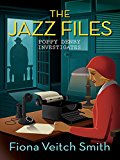
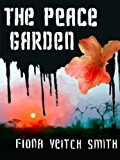
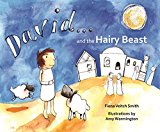
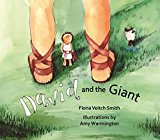
 Welcome to The Crafty Writer's free online creative writing course, presented by Fiona Veitch Smith, a freelance journalist, editor, author, playwright, screenwriter and writing teacher. I hope that you'll see a dramatic improvement in the quality of your writing as you work through this course.
Welcome to The Crafty Writer's free online creative writing course, presented by Fiona Veitch Smith, a freelance journalist, editor, author, playwright, screenwriter and writing teacher. I hope that you'll see a dramatic improvement in the quality of your writing as you work through this course. 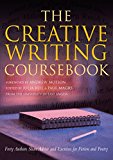
Hi Fiona,
I’ve found this part of the course very helpful (though I haven’t had time to do the exercises yet!). I do have a problem with ‘show, don’t tell’ as I always wonder what to do with descriptive passages. I’ve noticed in some novels, descriptive passages seem to be telling, not showing.
When a character is involved, I find it easier, as you can show their actions and feelings, but when describing a setting (e.g. ‘The house was at the end of the lane and was surrounded by trees’) is it possible to show and not tell? Thanks for your help.
Rebecca
Hi Rebecca. My on-site students tell me this has been the most useful part of the course so far. If we had longer, I would have spent one session on each of these elements. Show don’t tell usually applies to passages with characters, however, it can also be used in descriptive passage. To use your example, ‘The house was at the end of the lane and was surrounded by trees’ could be changed to ‘The house at the end of the lane was veiled by a copse of spruce’ or ‘If it hadn’t been for the red-tile-roof battling through the tree-tops, I would never have known there was a house at the end of the lane.’ Sometimes though your first example would be all you needed to say, particularly if you wanted to ‘rush’ your reader into the next passage of action. Hope this helps.
Hi Fiona,
I have not had time to tackle any of the exercises yet but I have read through and am looking forward to starting.
During my working life as a software engineer I had to write many reports and documents. I think this may be why I now have an ongoing battle stopping myself from drifting into passive speech. I am determined to conquer this fault.
Sue
Hi Sue,
Better passive than passe’! Good luck with it.
I really have enjoyed tackling this part, although I will try to do the exercises again properly when I have more time.
Although I know my short stories should be more ‘Show’ than ‘Tell’, I find it hard to do. It could be because I do some travel writing which, of necessity, seems to be automatically telling of experiences. I will try to reform!
Hello Verica. I think if you can get away from the phrase ‘show don’t tell’ and replace it with ‘experiential’ then you may see how travel writing can and should help you in your other writing. As you will no doubt know, the best travel writing is when the reader feels that he or she is experiencing the location along with the writer. This is also ‘show don’t tell’. Because of my journalistic background my first draft always tends to be more telling than showing. But that’s ok because then I know what’s going to happen. I have a skeleton or story arc to work with. I then look at ways of showing rather than telling in subsequent drafts. Happy writing!
Hi Fiona,
I have worked my way through the exercises and found them to be really helpfull.
Putting these two aspects together makes it clearer where I am going wrong. The ‘show don’t tell’ advice is something I always struggle with. It is beginning to make more sense now.
However looking at this morning’s writing I see I have fallen into the same old trap. Maybe one day I will be able to get this right but in the meantime I will have to pick it up when I am editing.
Thank you there is hope for me yet
Sue
Hi Sue,
As long as you pick it up in editing, you’ll be ok. If you get all self-conscious about ‘show don’t tell’ in your first draft you may inhibit your creative flow. Just get it out and sort out the problems later. I’m sure there is more than just hope for you!
Thanks again, this has shown me that I tend to underwrite descriptive passages, I am going to go through my novel and look for ways to fix this, but maybe I should wait until the end and go back through in editing. Either way I will try to do better and not go to the other extreme. Thanks
I tend to underwrite too, TJ. In fact today I’ve just been going back over the old novel, fleshing out some of the descriptive passages. My, you’re workiing through this at some pace!
Oh dear. I do believe I have been ‘telling’ rather than ‘showing’ in my stories to a fairly large extent.
I never realised it before, but it’s very useful to know. I’ll definitely have to look out for it in the future.
We all do it to some extent Katiyana. But now that you realise you do it, you can root it out. Good luck with it.
I’m afraid I’m the sort that loves to embellish with words and do the “overkill” method in my sentence structures. I’ve been Tweeting for over a year to train myself to stop over embellishing and to strip down the idea to its basic core while still retaining the emotion. Not easy.
But I’m hoping that it will help me to tone some of my more descriptive prose down to only that which conveys that needed pieces to invoke the desired response and trim off the excess.
This is most helpful in focusing on “just the right words”. Too many paragraphs of overkill description or fancy prose can kill a story.
I’ve done a lot of writing as a web designer while creating sites but recently I wanted to learn to write fiction. The ideas of reducing or removing adverbs and showing, not telling are big jumps for me. Just like Katiyana, I believe I’ve been a teller, as it’s the easy route for new writers, however the difference between telling and showing is rather shocking.
This is by far the most helpful topic yet! I believe I have been “telling” as well which now, in comparison to these examples, truly dulls a story! Priceless information here! Much appreciated!
Thanks for really showing “how to bring ones own story to life” I have been writing poetry for some years but now want to start writing prose and this is really helpful, especially the part not to tell but show!
You’re welcome Jasmin. Telling not showing is a very common problem with writers at all levels.
I tend to tell rather than show in my writing. It’s probably because my writing is based more on thoughts and feelings, but this taught me that by showing instead of telling, I put the reader in my shoes or my character’s shoes.
I find showing a great help in writing children’s stories and this exercise is wonderful. Perhaps my youngest grandson will enjoy snuggling with Grammie now that I am learning to show him a story.
Grannies are just good to snuggle with anyway
This was really helpful. Thanks a lot.
You’re welcome, Suzie.
Exercise 12:
The dog grew drowsy in the warm sun and lay down to sleep.